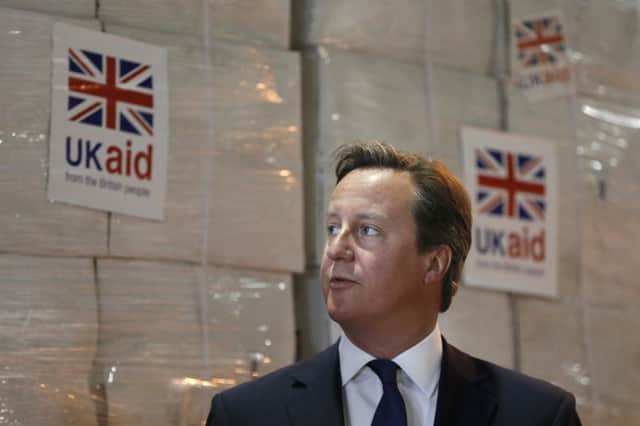Refugee camps the focus as UK scales back its Sinjar aid effort


Further aid drops by RAF Hercules aircraft were put on hold although the Prime Minister stressed that the option, along with Chinook helicopters, would remain in place.
Downing Street also rowed back on previous talk by the Prime Minister of a rescue mission to help refugees after surveillance by British Tornado aircraft backed up intelligence from a United States reconnaisance team suggesting many refugees had managed to escape leaving numbers in the “low thousands”.
Advertisement
Hide AdAdvertisement
Hide AdEarlier in the week, Kurdish fighters secured victories against Islamic State forces opening a corridor to the north allowing people to leave the mountain range and Downing Street said around a 1,000 people were now reaching relative safety every night.
With the immediate emergency apparently receding, aid efforts will now focus on help for the hundreds of thousands of people who now in a series of camps across northern Iraq having fled their homes to escape IS advances.
Speaking after Mr Cameron chaired the latest meeting of the Government’s Cobra emergency committee, a No 10 spokesman said: “The Prime Minister concluded that the humanitarian situation remains our priority.
“While the situation on Mount Sinjar is better than we had feared, and a rescue mission now looks far less likely, we will continue to monitor this situation closely with our US partners and Kurdish forces.”
Advertisement
Hide AdAdvertisement
Hide AdForeign Secretary Philip Hammond will use today’s meeting of European Union foreign ministers to press for “better co-ordination of aid and military supplies to Iraq”, No 10 added.
US officials said that roughly 4,500 people remained on Mount Sinjar, nearly half of whom are herders who lived there before the siege and have no desire to leave.
The sense of crisis across Iraq continued with clashes between militants and IS forces west of Baghdad leading to the deaths of at least four children yesterday.
Fighting erupted in the militant-held city of Fallujah, about 40 milewest of Baghdad. Along with the children, a woman and at least 10 militants died according toFallujah hospital director Ahmed Shami.
Advertisement
Hide AdAdvertisement
Hide AdHe had no further details on the clashes, beyond saying that four other children and another woman were wounded in the violence.
It was difficult to gauge the situation in Fallujah, which has been in the hands of the Islamic State and allied militants since early January, when the insurgents seized much of the western Anbar province along with parts of the provincial capital of Ramadi.
Meanwhile, eight civilians were killed in separate attacks across Baghdad.
A bomb attached to a minibus in the central Sheik Omar area killed four commuters and wounded 11 others, a police officer said. Another bomb went off in a commercial area in the south-eastern Bayaa neighbourhood, killing two and wounding nine, another police officer said.
Advertisement
Hide AdAdvertisement
Hide AdTwo other civilians were killed and 11 wounded when two mortar rounds struck another residential area, he said. Three medical officials confirmed the casualty figures.
The country remains gripped by a political crisis with Iraq’s president having nominated a Shiite politician, Haider Abadi, to form the next government rather than current Prime Minister Nouri al-Maliki.
But Mr Maliki has refused to give up power until Iraq’s federal court has ruled on the move.